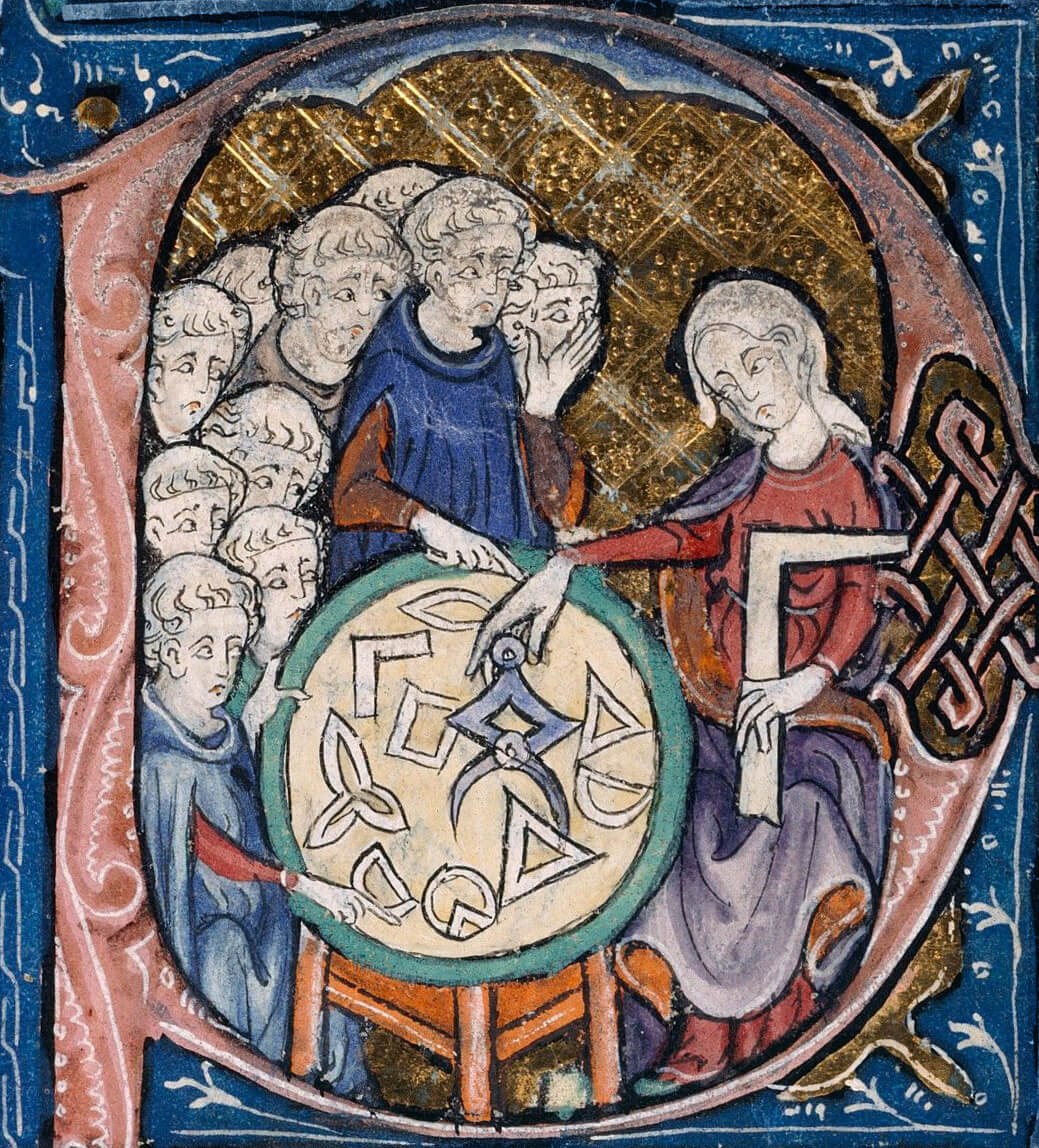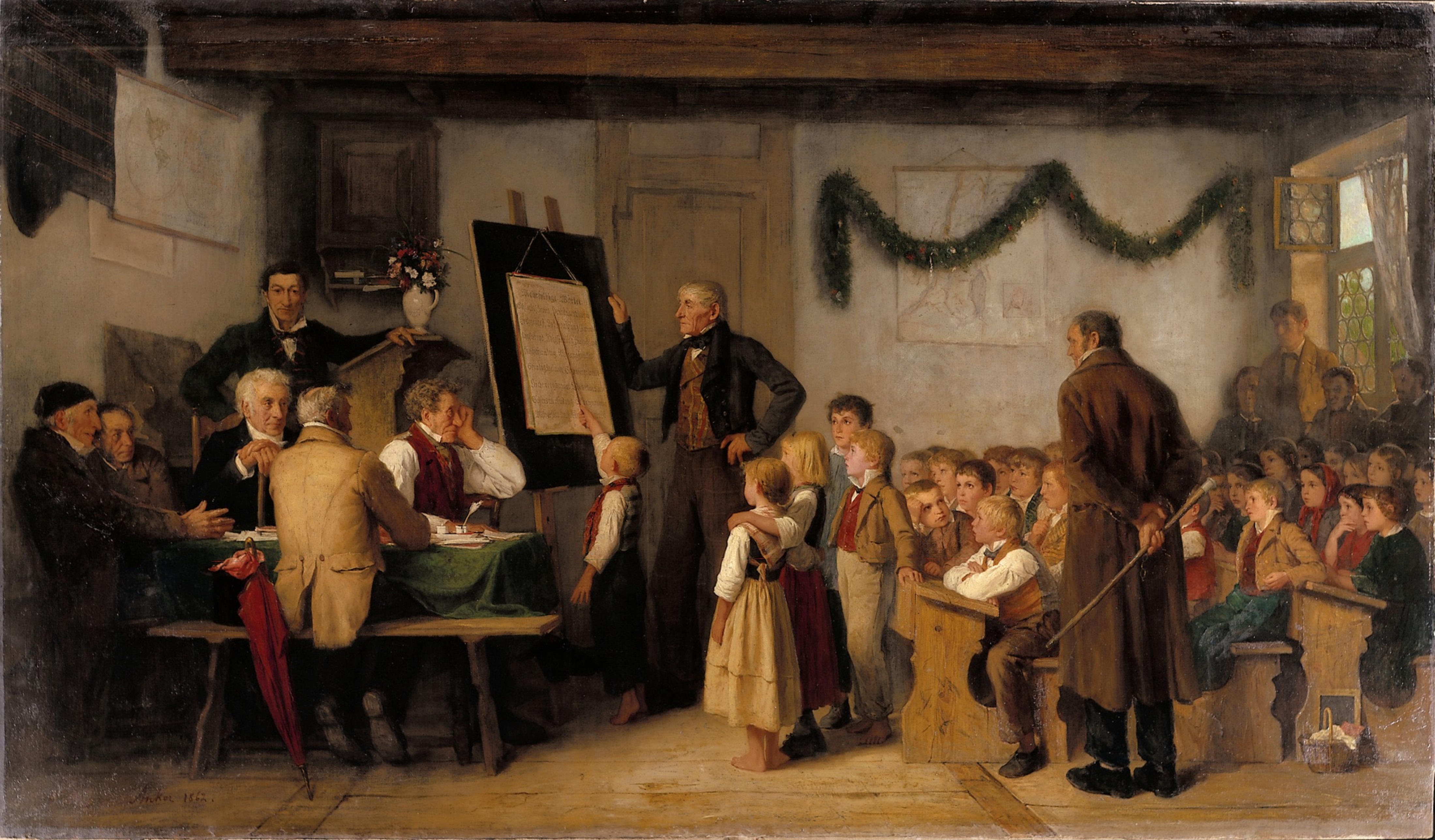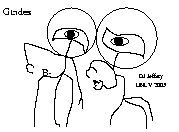
Physics 211 (Section 1) and 212 (Section 1), Engineering Physics I/II: University of Idaho: 2009 Fall
The course mottos: very reassuring I think.
Sections
This syllabus is subject to change at the discretion of the instructor. Any changes will be announced in class as well as made on this page.
which is the page you are maybe viewing right now.
This page is the preliminary syllabus and includes
syllabus items
and the tentative schedules:
Tentative Schedule I for 211
and
Tentative Schedule II for 212.
This page is/will be/may be linked from the official physics department
course web page.
Physics 212,
Sections 1 and 2: Engineering/Physics (EP) 216, MWF 12:30--1:40 (1) and 1:30--2:40 (2). (I don't teach these courses.)
Both as per the
Physics schedule.
They are only approximately coordinated with the lecture class.
For the summer semester check with your lab instructor.
Physics 212:
Recitation: EP 122, ???, ???, Leader: ???.
Unfortunately, the recitations are NOT marked on any UI schedule that I can find.
The recitation periods are NOT in the regular classroom as you can see.
The course instructor
may also be present for some recitation periods for awhile.
Probably there will be a concentration on getting homework problems answered.
Group study among students both in recitation and out is great.
As always, students are encouraged to help each other with material and homework
problems.
But there should be NO straight copying from each other---helping a person through
all the steps and comparing answers is good---straight copying is bad.
Students ideally should get most/all problems done BEFORE the recitation, but
undergraduates pioneered
just-in-time delivery
before anyone else.
I try to make the homeworks due the class day at 4:00 pm after recitation, but that does not always work out.
There is also the
Tutoring and Academic Assistance Programs (TAAP), Commons, Rooms 322 and 327.
This program offers small group tutoring for students.
You can sign up for
an existing group
or request
a new group.
Intro physics courses typically have
existing groups after a short period into the semester.
This is really a pretty good deal. Group work is very effective and social.
Ideally students should have their own informal groups in addition to any
formal groups, but sometimes it's hard to get to know people and
TAAP
supplies a warm, fuzzy tutor.
Caption: "Close up of a Cairn Terrier".
A warm fuzzy tutor?
Credit: User: Mrmcdonnell.
Linked source: Wikipedia
image
http://en.wikipedia.org/wiki/File:Cairn_Terrier_CloseUp.jpg.
Permission: Licensed under the
Creative Commons Attribution ShareAlike 2.5.
Chapters 6 and 7 look a little remixed and some other sections
might be changed a bit.
In terms of content using a 6th edition would be fine.
But you will have to adjust to the fact that sections might be a bit re-ordered.
Also problems might be changed or re-ordered.
This is no difficulty for any
Physics 211,212,213
courses I teach, since I use my
own problem bank and do NOT rely on the textbook problems.
But other instructors may assign homework questions from the textbook.
So if you need to take other courses in the
Physics 211,212,213
sequence, you may
have to get the questions from someone else which could be a hassle.
With respect to the actual topics covered, virtually all intro physics textbooks with calculus
from the last 30 years if not 50 years are adequate.
With enough adaptations on the student's part almost any of these would do.
Serway is a pretty good book.
It's a bit on the expensive side, but most of you will use it for
the three course sequence
Physics 211,212,213,
and so you can imagine
that it's price is divided by three if that helps any.
It has lots of words and boxes and examples and stuff.
To old-timers (e.g., yours truly), it's a bit over-busy.
For
Physics 211,
we are planning to cover chapters 1--15, omitting chapter 14 and probably 12.
See the Tentative Schedule I below.
For
Physics 212,
we are planning to cover chapters 23--34.
See the Tentative Schedule II below.
A comparable textbook
Tipler ``Physics for Scientists and Engineers'' has been
put on reserve at the
library.
It can be checked out for 2 hours for reading.
No extra Serway was available and
Tipler
covers all the same material in about the same order.
All intro physics textbooks are much the same.
For
Physics 211,
the instructor's notes for each chapter of
Serway
are available online on
Tentative Schedule I
For
Physics 212,
the instructor's notes for each chapter of
Serway
are available online on
Tentative Schedule II
The notes are in pdf format.
Most are handwritten and are of variable legibility and are NOT updated.
The handwritten ones for
Physics 212
are not so bad; those for
Physics 211
are not so good.
Some chapters have
latex-ed
notes which in various stages of underconstruction---from next to
nothing to complete.
Some semester down the road---way down the road---there will be complete
latex-ed notes for all chapters.
The notes correspond to the chapters
of Serway pretty much with a few minor deviations.
However, I have sometimes rearranged the topics in a chapter
to suit my best understanding of their logical ordering.
It's suggested that you-all download those before they are covered in class and
add your own additional notes on them during the lectures.
But you don't need to do that or to take any notes.
The textbook Serway covers
virtually all the material you need to know in courses
Physics 211,212,213 .
If you knew the book really well, you'd hardly need the notes.
But notes and Serway are
complementary.
It does help to have alternative sources.
We will learn some physics.
At this level physics is rather abstract and idealized.
We deal with ideal motions, ideal point masses, ideal surfaces, ideal monkeys, ideal
systems, ideal charge structures, ideal electric field structures, ideal circuits, ideal optical systems.
Many real everyday motions and systems are much more complex than the cases we deal with:
just think about walking, bike riding, skipping rope.
In particular, real everyday motions usually involve resistive media and surfaces.
We discuss those resistive forces a bit and consider friction and maybe fluid resistance.
The point of studying such ideal systems is to understand them in terms of the very basic laws of
classical physics---pre-20th
century physics in terms of discovery, but still very useful in practice.
You don't need know intro physics to walk, ride a bike, or play catch---or to
turn on your lights.
Moreover, the oceans were sailed west by
Columbus,
east by the
Polynesians,
and
pyramids
and
cathedrals
were build and all without knowing intro physics.
Caption: "Chartres Cathedral from the South East".
Credit: User T Taylor.
Linked source: Wikipedia
image
http://en.wikipedia.org/wiki/File:Chartres_Cathedral_000.JPG.
Public domain at least in USA.
But you do need to know it---and whole lot more---to design a
rocket ship
or a CD player.
You can only get so far by empirical means alone.
Note the ``alone'': empirical means are still essential.
But first we do the ideal problems---how can you do the real problems, if
can't do the ideal ones?
Now some people in his course may not go on to advanced
physics or
engineering.
But you will go on to advanced something---and an improved understanding how to analyze
and predict from basic principles will be a boon---for many students, it may
be the most important feature of this course.
That is the empowerment of intro physics.
Of course, studying intro physics is enlightening.
It helps understanding eternity and infinity.
As well as understanding home.
There is some math in this course.
Quite a bit actually---but that's good.
You-all are all in programs that need math skills.
Many of you already know some
calculus.
But since many people in
Physics 211
are taking
calculus as a corequisite,
the tools of
calculus are introduced
gradually into our developments and problems.
Calculus courses tend to start off doing limit theorems, and
and we need in physics are derivatives and integrels.
It's no surprise to you that this is a pretty hard course.
But as I always say, it's nothing like
organic chemistry.
But one just accepts that and digs in for the long haul.
If you are doing both the lecture and corresponding lab course in the summer, then
you are doing about 9 hours in class.
You should do about 2 hours out of class for every hour in class.
This means about 25 hours per week.
Basically a half-time job.
The math is really never more than simple algebra and calculus---if you find
yourself doing a page of calculations, you are way off the path.
The hardness is conceptual.
Understand the concepts---and that's often hard---and the rest is relatively easy.
When confronted with a problem, recognize the concepts needed
for a solution, and then you should know or be able to find the
right equation and then do the algebra in usually just a couple lines.
There will a fair number of DERIVATIONS in this course---no apologies.
Caption:
"Detail of a scene in the bowl of the letter 'P' with a woman with a set-square
and dividers; using a compass to measure distances on a diagram. In her left
hand she holds a square, an implement for testing or drawing right angles.
She is watched by a group of students. In the Middle Ages, it is unusual to see women
represented as teachers, in particular when the students appear to be monks.
She may be the personification of Geometry. Illustration at the beginning
of Euclid's Elementa, in the translation attributed to Adelard of Bath.
Year: 1309--1316, France (Paris)."
Credit: Unknown 14th century artist, posted by User: Leinad-Z:
Linked source: Wikipedia
image
http://en.wikipedia.org/wiki/File:Woman_teaching_geometry.jpg.
Public domain at least in USA.
But the DERIVATIONS are part of the course and you are
expected to understand them---you should review them as they
are presented to make sure you do---and understanding them will help with
the tested material.
I am trying to convince you NOT to take the seemingly easy path
of just trying to memorize a trick for every problem you see.
I am trying to convince you to understand the general approach---that's
the way to prepare to deal with problems you've never seen before.
You should put in of study for every hour in class:
---Richard Nixon (1913--1994): quoted
approximately from memory.
That study time should be put into doing the readings,
reviewing/analyzing the derivations until you understand them, and
in doing the homework problems.
Discuss with colleagues, TAs, me.
How could you ever understand something without thinking about it?
Overcoming the student inhibitions to learning is actually the pedagogical
challenge.
They are/will be posted along with their due dates
below on
Tentative Schedule I/Tentative
Schedule II.
Homeworks will usually be due on Friday by 4:00 pm for
Physics 211
(so just after the official recitation for this class)
and
???, for
Physics 212
(so just after the official recitation for this class).
The due dates are subject to adjustment during the semester.
These will be announced in class.
Schedule IIhttp://physics.nhn.ou.edu/~jeffery/course/c_intro/intrc.html
Physics 211:
Recitation: EP 204, W, 4:30--5:30, Leader: Dinesh.
The instructor is also available for help with things whenever you
can catch him such as his office hours as given in
the instructor's schedule.
Recitations leader will probably/may mostly run things in group mode:
students work in groups on problems and the leader will circulate and facilitate.
NO PHYSICS DEPARTMENT TUTORING FOR SUMMER CLASSES.
NO TAAP FOR SUMMER CLASSES????.

For Physics 211.
For Physics 212.
But for 70-minute summer lectures, we will probably usually
take a 5-MINUTE BREAK
at the 40-minute mark or so.
Note
Serway, Physics for Scientists and Engineers, Chapters 1--39, 6th edition
is almost the same text.
Those basic laws are NOT obvious---they are usually hidden in the complexity
of everyday motions and systems that we deal with empirically---learnt by
trial and error to oversimplify---and usually very effectively.
Using these basic laws, systems much more complex than ideal ones
can be analyzed---they can be
analyzed from first principles---or at least basic principles.
 Eternity and infinity from our small platform.
Eternity and infinity from our small platform.
 Earthrise from Apollo 11, 1969jul16.
Credit:
NASA.
Earthrise from Apollo 11, 1969jul16.
Credit:
NASA.
Beware---sometimes we get a little ahead of the calculus course.
We will give introductions to techniques when it seems necessary.
For
Physics 212,
the necessary tools of
calculus are considered
known although short reviews will occur as needed.
In the , there's the mindnumbing monotony of 5 days a week
for 8 weeks.
But there are no essays and no term-length projects.
And usually the DERIVATIONS won't be tested in a direct sense---but I've been
known to throw a derivation question onto a exam.

``The art of studying is the art of applying the seat of the pants
to the chair.''
The two-hour rule is true for almost all courses actually.
Think about the material.
One of my great goals as a teacher of physics is get students
to understand conceptual unity and power---and beauty---of physics.
Now for the homework grading scheme:
The chapter reading is the chapter in Serway AND/OR the corresponding latex-ed lecture notes if they are labeled complete or nearly complete.
Having read the material before it is lectured on makes an immense difference to comprehension of the lectures.
The truth is, it is hard to pay attention to a lecture for more than 20 minutes---but if you have done the reading then losing attention now and then is not such a problem---you can pick up the thread.
At the end of this course, if you say you never understood anything in the lectures, you should ask yourself if you were ever able to answer YES to the reading question.
There are a lot of these, but most are just identifying keywords and concepts. A few are harder.
It is a yes/no decision on the marker's part if the answer is sufficiently complete.
No marks for just writing down a number.
I'm unlikely to second-guess the grader on his/her decision.
There must be a followable solution for full marks.
The solutions will be posted eventually on Tentative Schedule I/Tentative Schedule II.
To access the posted homeworks, homework solutions, and test solutions you need the SUPERSECRET username and password---which you can get from the instructor.
Questions that reappear on the exams might be tweaked a bit from previous versions.
Homeworks will count 10 % or less of the final grade.
They are worth some marks just for a little frisson.
The marks are psychological trick to make students do what the should do anyway---we all play these tricks on ourselves.

Caption: "Holbein d. J., Hans; Title: Deutsch: Porträt des Erasmus von Rotterdam am Schreibpult; Year: 1523".
The frisson---you see it in his face.
Credit: Hans Holbein the Younger.
Linked source: Wikipedia image http://en.wikipedia.org/wiki/File:Hans_Holbein_d._J._047.jpg.
Public domain at least in USA.
: I will NOT do all homework problems in class---only 2 or 3 at most.
The students are strongly encouraged to sweat over them alone first---relying on notes, the textbook, and the power of pure thought---and then seek help from friends, the instructor (office hours per instructor's schedule), in the recitation period, the TAs in EP 309, TAAP groups.
See Activity-Mode Course.
Maybe one day I'll try running one of these.
But not this day.

Caption: " `The school exam'. Oil on canvas, 103 × 175 cm. Kunstmuseum Bern. Date 1862".
Just like this it'll be.
Credit: Albert Anker (1831--1910).
Linked source: Wikipedia image ihttp://en.wikipedia.org/wiki/File:Albert_Anker_-_Das_Schulexamen.jpg.
Public domain at least in USA.
The final is about 50 % weighted or more on material since the last in-class exam and about 50 % weighted or less on all the material that came before the last in-class exam.
These will be equally weighted and each will cover 1/3 of the course.
If you are in Physics 212, then earlier topics includes all topics from Physics 211.
TENTATIVE EXAM SCHEDULE
_________________________________________________________________
Exam Date Solutions (posted post-exam)
_________________________________________________________________
Physics 211
Exam 1 Sep30 W Exam 1 solutions
Exam 2 Nov18 W Exam 2 solutions
Exam 3 ???? Exam 3 solutions Probably will be omitted.
Final Exam Dec17 R Final Exam solutions
The final is 10:00--12:00 am in the regular class room
as specified by Finals Schedule for 2009 Fall.
Physics 212
Exam 1 Jul01 W Exam 1 solutions
Exam 2 Jul21 T Exam 2 solutions
Exam 3 Aug07 F Exam 3 solutions Probably omitted, except for summer courses.
Final Exam None Final Exam solutions
The final is 10:00--12:00 am in the regular class room
as specified by Finals Schedule for 2009 Spring.
_________________________________________________________________
The in-class exams will consist of some tens of multiple-choice questions and one or a few full-answer questions.
The final (for academic-year courses) will be somewhat like the in-class exams, but about twice as long.
The exams are closed book.
Calculators are permitted for calculational work only. No stored solutions or formulae.
Cell phones MUST be turned off and be out of sight.
An equation sheet will be provided with the exams. This is the same equation sheet that comes with the homeworks.
There are NO scheduled review days. But students can keep the instructor busy answering questions on the day before exams. There are recitation periods recall (except for summer courses). And there might be time for a review day before the final.
Make-up exams are possible, but students must ask for them promptly and AVOID knowing anything about given exams and AVOID revealing anything to students have not taken the exam.
Academic dishonesty is not unheard of UI. Believe me, you don't want to come to the attention of Dean of Students Office.
Academic-year lecture-mode courses
homeworks 10 % or less 1 drop
2 or 3 in-class exams 45 % or more no drop
1 comprehensive final 45 % or more no drop
Each in-class exam is worth 22.5 or 15 % of final grade.
Academic-year activity-mode courses
quizzes 10 % or less 1 drop
homeworks 10 % or less 1 drop
2 or 3 in-class exams 40 % or more no drop
1 comprehensive final 40 % or more no drop
Each in-class exam is worth 20 or 13.333 % of final grade.
Summer courses
homeworks 10 % or less 1 drop
3 in-class exams 90 % or more no drop
Each in-class exam is worth 30 % of the final grade.
Attendance is NOT kept and NO marks are assigned
for attendance---except that is in an
activity-mode course.
Students are encouraged to keep good attendance.
So 3/5 in-class hours and at least 6/10 out-of-class hours.
Letter grades will be assigned per UI catalog---which allow instructors some freedom of interpretation.
The instructor uses a curve to automatically assign letter grades during the semester---if there are enough students to make a curve meaningful---if there arn't, the instructor just decides on letter grades. There is NO fixed scale.
The final grades are decided on by the instructor directly---the curve is NOT used, except as a guide.
Students can always ask the instructor for their current mark record and letter grades. Queries by email are probably best for this.
The instructor will submit MIDTERM GRADES and FINAL GRADES as scheduled in the academic calendar---which doesn't specify any midterm grade dates for summer courses.
Remember that after an instructor has submitted FINAL GRADES, any adjustments (except for purely clerical errors) are NOT allowed by university policy.
 Beware of aliens bearing grades.
Beware of aliens bearing grades.
No dated schedule has ever been adhered to by the instructor---except for Summer courses.
So there are no dates for chapters in this tentative schedule.
However, we have 15/16 weeks in the semester (not counting spring/fall recess) and we may lose about two/one weeks of classes for in-class exams and holidays: e.g., in the fall, Labor Day and in the spring Martin Luther King Day and Presidents Day.
So about 14 weeks and 42 lecture class hours.
Since we are planning on 13 or 14 chapters (chapters 1--15 omitting chapter 14 and probably chapter 12), we will be covering about a chapter per week on average.
Some parts of chapters may be omitted.
Some parts of chapters may be assigned as readings with NO in-class lecturing on them.
No dated schedule has ever been adhered to by the instructor---except for summer courses.
So there are no dates for chapters in this tentative schedule.
However, we have 16 weeks in the semester (not counting spring/fall recess) and we may lose about two weeks of classes for in-class exams and holidays: e.g., in the fall, Labor Day and in the spring Martin Luther King Day and Presidents Day.
So about 14 weeks and 42 lecture class hours.
Since we are planning on 12 chapters (chapters 23--34), we will be covering about a chapter per week on average.
We have 8 weeks in the summer semester and 5 lecture periods a week.
So about 40-1=39 lecture periods where the subtracted period is for the July 4 holiday.
Since we are planning on covering chapters 23--34 (12 chapters) we will cover about a chapter every 3 days and that will take 36 lecture periods.
The remaining 3 lecture periods are for the exams.
But that's why we have courses, to yoke ourselves together like mule team and just drive forward to the the end in a finite time.
And it's all great stuff: intellectually exciting, vital for education and career.
Some parts of chapters may be omitted.
Some parts of chapters may be assigned as readings with NO in-class lecturing on them.